Imagine stepping into your backyard and feeling an instant wave of relaxation and joy, as if you’ve entered your very own outdoor oasis. Whether you’re a novice gardener or a seasoned landscaper, our guide, “7 Outdoor Comfort Ideas for Your Next Project,” is crafted to help you unlock the potential of your outdoor spaces. This list isn’t just about aesthetics; it’s about creating environments that enrich your daily life and well-being.
From cozy seating arrangements to innovative shade solutions, these ideas are designed to elevate your outdoor experience while adding value to your home. With practical tips and creative insights, you’ll gain the confidence to tackle projects that transform your space into a haven of comfort and style. Let’s embark on this journey together and discover the endless rewards of beautiful outdoor living!
Incorporate Weather-Resistant Fabrics
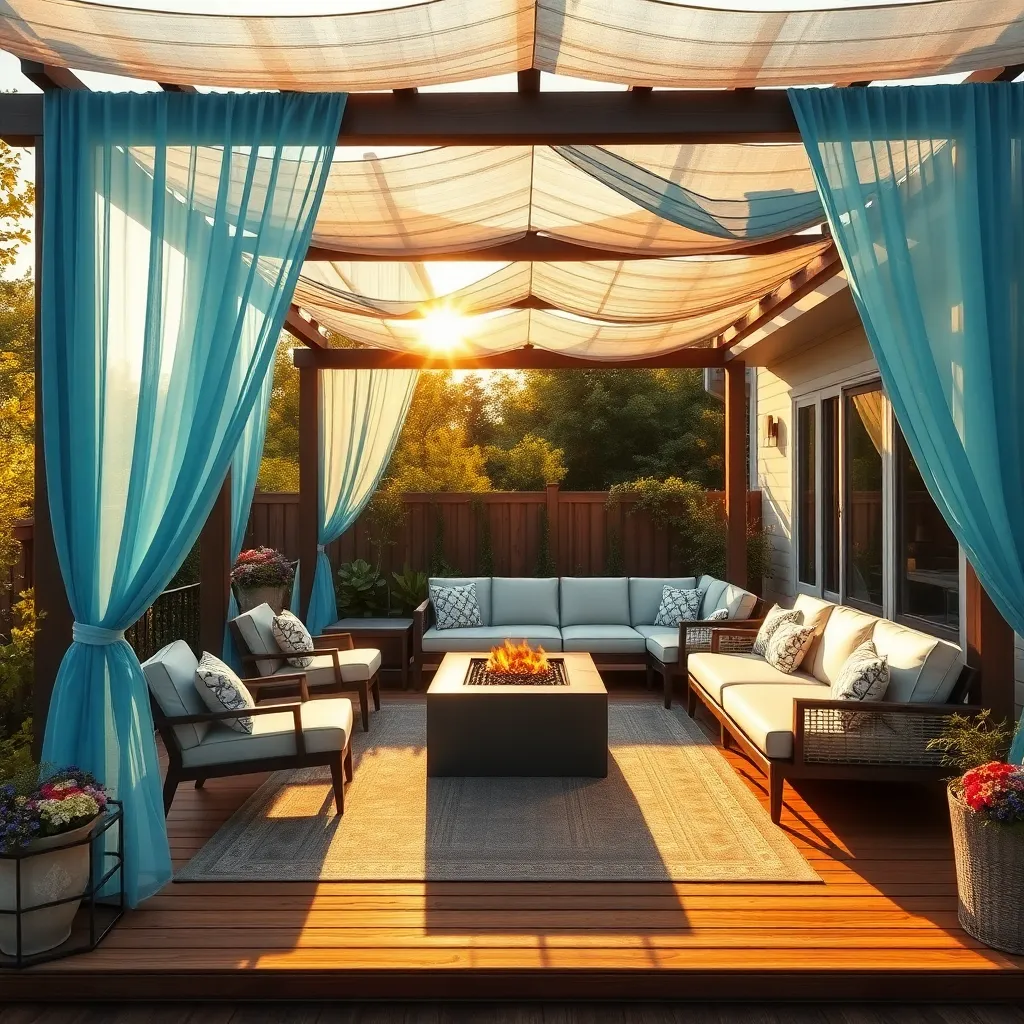
Incorporating weather-resistant fabrics is essential to ensure your outdoor shelter stands up to the elements while remaining comfortable and stylish. Consider using materials like Sunbrella, a popular choice known for its UV resistance and durability, which helps prevent fading and wear over time. For a more luxurious touch, look for fabrics that are not only water-resistant but also include a mildew-resistant coating, maintaining a fresh appearance even in damp conditions.
When designing your outdoor space, think about integrating these fabrics into cushions, awnings, or even as curtains for added privacy and sun protection. For more advanced projects, consider adding a retractable fabric roof or side panels that can be adjusted based on the weather, providing versatility and function. To get the most out of your choices, remember to measure accurately, ensuring your fabric solutions fit perfectly within your space.
Utilize Retractable Shade Systems
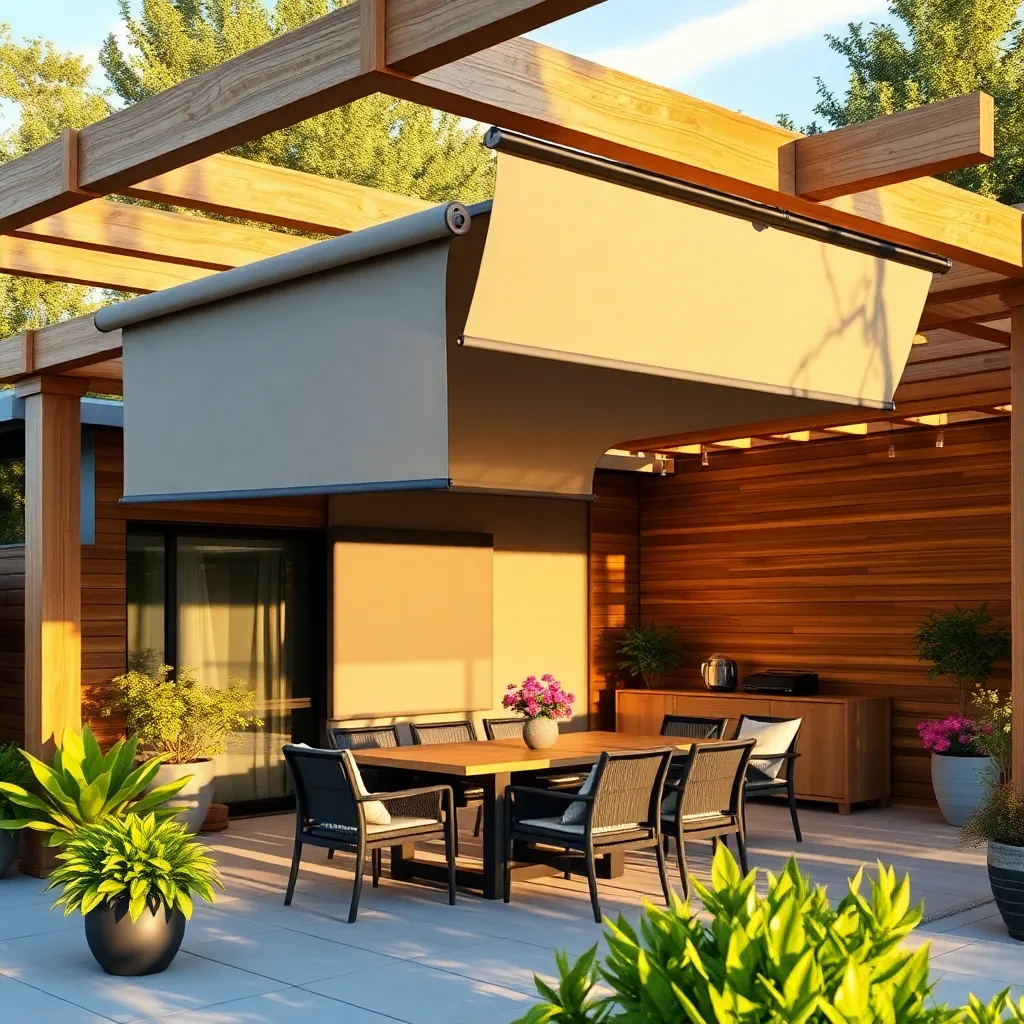
Retractable shade systems are a versatile choice for outdoor comfort, offering homeowners the flexibility to enjoy sunlight or shade with ease. These systems can be mounted to existing structures like pergolas or directly to your home, providing a seamless integration with your outdoor space. For an effective setup, consider using weather-resistant materials such as aluminum frames and UV-protected fabrics. The ability to retract the cover means you can adapt to changing weather conditions instantly, making it a practical solution for every season.
When choosing a retractable shade system, pay attention to the size and style that best fits your space. For large areas, motorized systems allow for effortless operation with a remote or smartphone app, ideal for tech-savvy users. Beginners might opt for manual systems, which are generally easier to install and more budget-friendly. Consider adding side panels or drop screens for additional privacy and sun protection, ensuring a comfortable and customizable outdoor experience. With these systems, you can enjoy the outdoors on your terms, making your patio a true extension of your living space.
Add Cozy Outdoor Heating Options
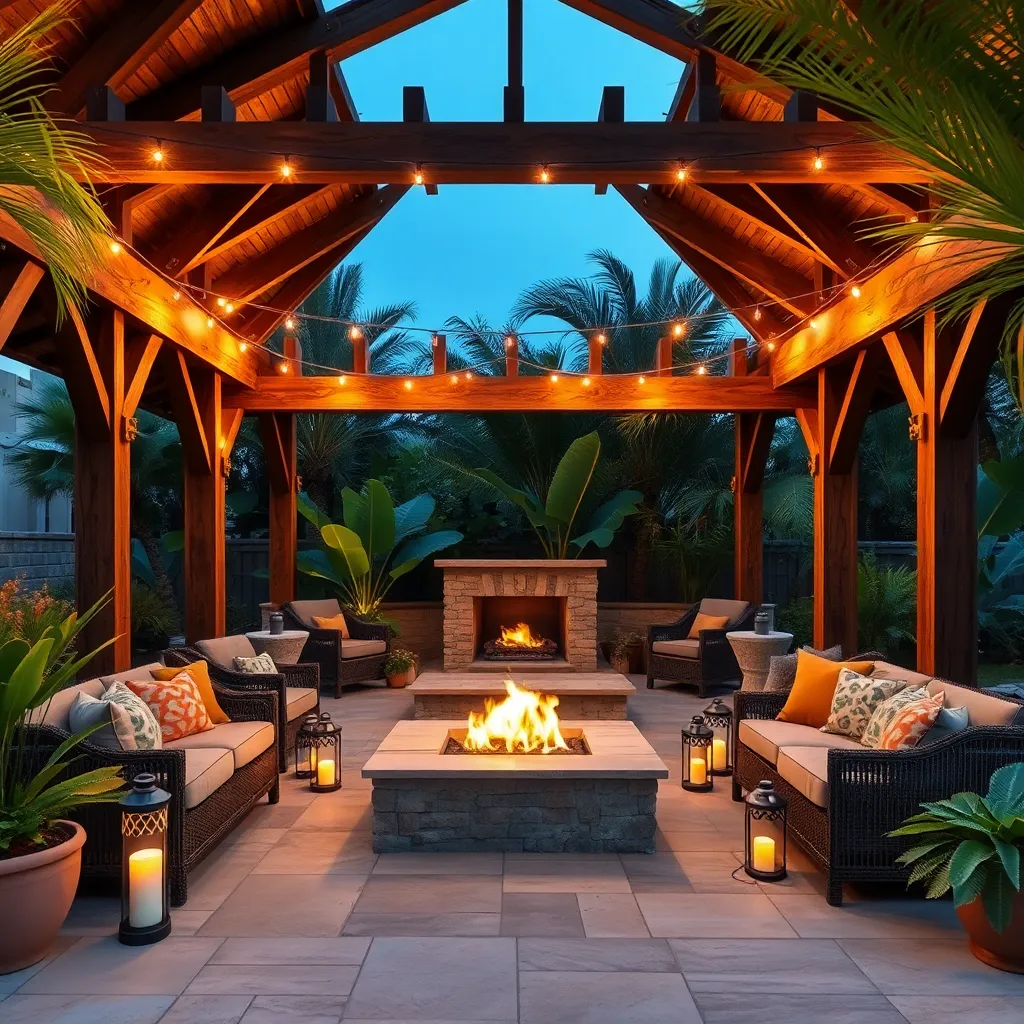
Enhancing your outdoor space with cozy heating options can transform chilly nights into delightful gatherings. Consider installing freestanding patio heaters, which are available in gas or electric models and can be strategically placed around seating areas for optimal warmth. For a more permanent solution, you might opt for a built-in outdoor fireplace, which not only provides heat but also adds a stunning focal point to your space. When choosing materials, prioritize weather-resistant options like stainless steel or stone to ensure longevity.
For those interested in advanced solutions, consider integrating infrared heaters into your existing structures, such as pergolas or gazebos. These heaters are efficient and can be discreetly mounted, providing warmth without taking up floor space. Additionally, you might explore adding heated flooring to patios or decks, which can keep your feet comfortable even in cooler weather. Remember to assess the dimensions of your outdoor area to select heating options that offer adequate coverage, ensuring every corner of your space remains inviting year-round.
Design Multi-Functional Seating Areas
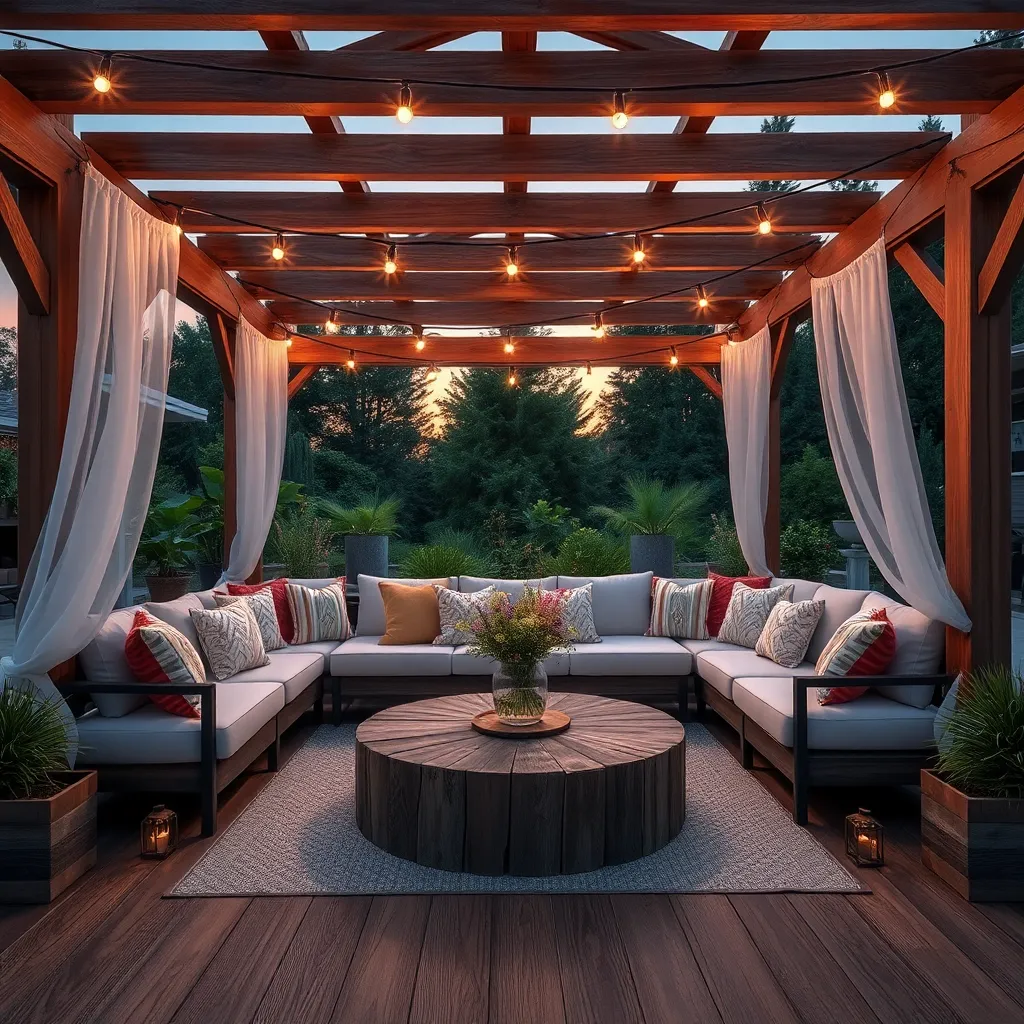
Creating multi-functional seating areas in your outdoor space can greatly enhance both comfort and utility. Consider using weather-resistant materials like teak, cedar, or powder-coated metal for durability. You can incorporate built-in benches with storage underneath to keep cushions and outdoor blankets neatly tucked away. For a more flexible setup, try using modular furniture that can be rearranged easily to accommodate different occasions, from intimate gatherings to larger parties.
To add a touch of versatility, install a pergola or gazebo over your seating area for shade and shelter. Integrate features like adjustable canopies or retractable awnings to control sunlight and rain exposure. For a truly dynamic space, include elements such as fold-down tables or pull-out ottomans that can be stowed away when not in use. Advanced gardeners might consider adding a living wall or vertical garden nearby, which can provide a lush backdrop and contribute to a sense of seclusion and tranquility.
Implement Natural Windbreak Features
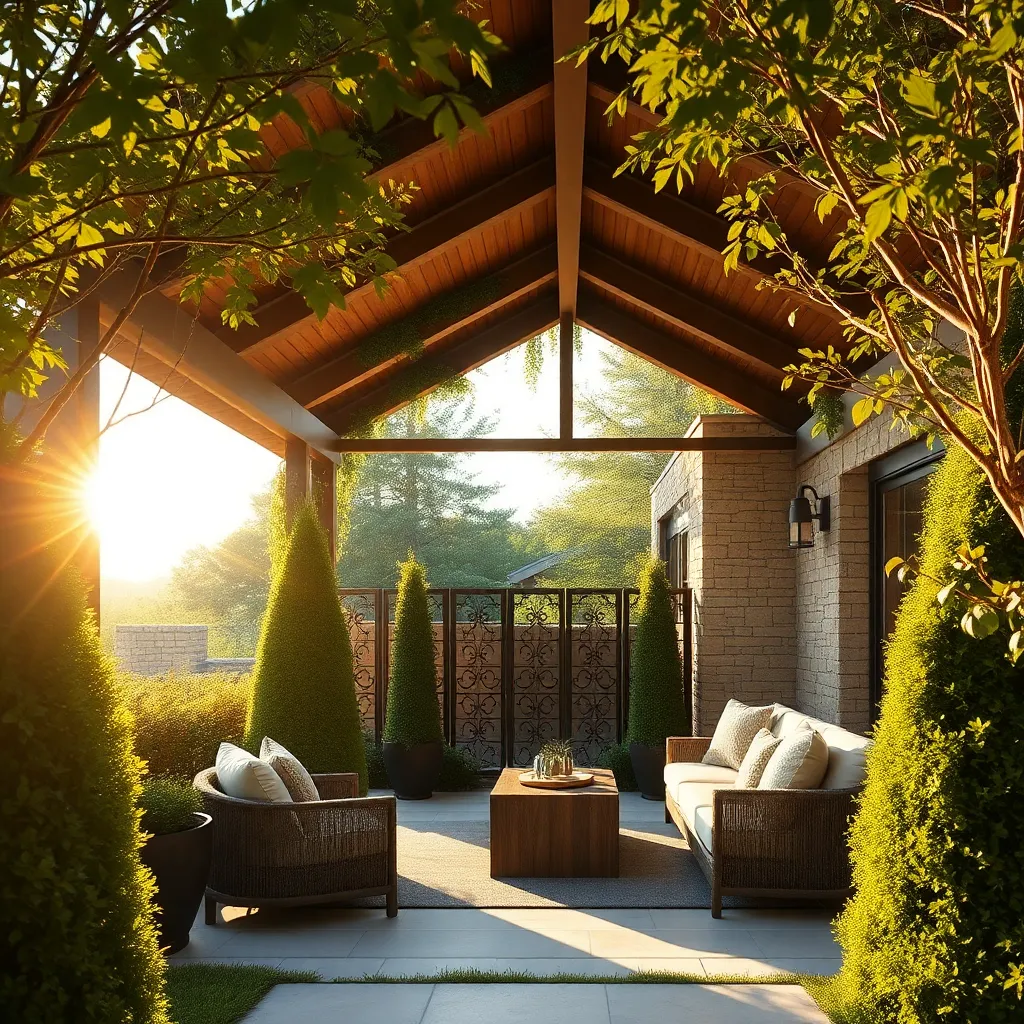
Enhancing your outdoor space with natural windbreak features not only adds to its aesthetic appeal but also improves comfort by reducing wind exposure. Consider planting a line of dense, evergreen shrubs or trees, such as spruce or holly, which are excellent for blocking wind throughout the year. Position these plants strategically on the windward side of your space, ideally 10-15 feet from your seating area, to create an effective barrier without feeling enclosed. For beginners, starting with fast-growing options like bamboo can quickly provide coverage, while more experienced gardeners might design layered plantings for a more natural look.
In addition to plants, incorporating hardscaping elements can enhance wind protection. Building a trellis or lattice wall, adorned with climbing plants, offers both beauty and functionality. Consider materials like cedar or redwood, which are naturally resistant to decay and can withstand outdoor conditions. For a more advanced touch, designing a stone or brick wall adds permanence and can significantly dampen wind. Keep these structures at least 5-6 feet high and ensure they are anchored securely to withstand strong gusts. By combining these natural and structural elements, you can create a serene, protected outdoor haven.
Integrate Functional Outdoor Storage
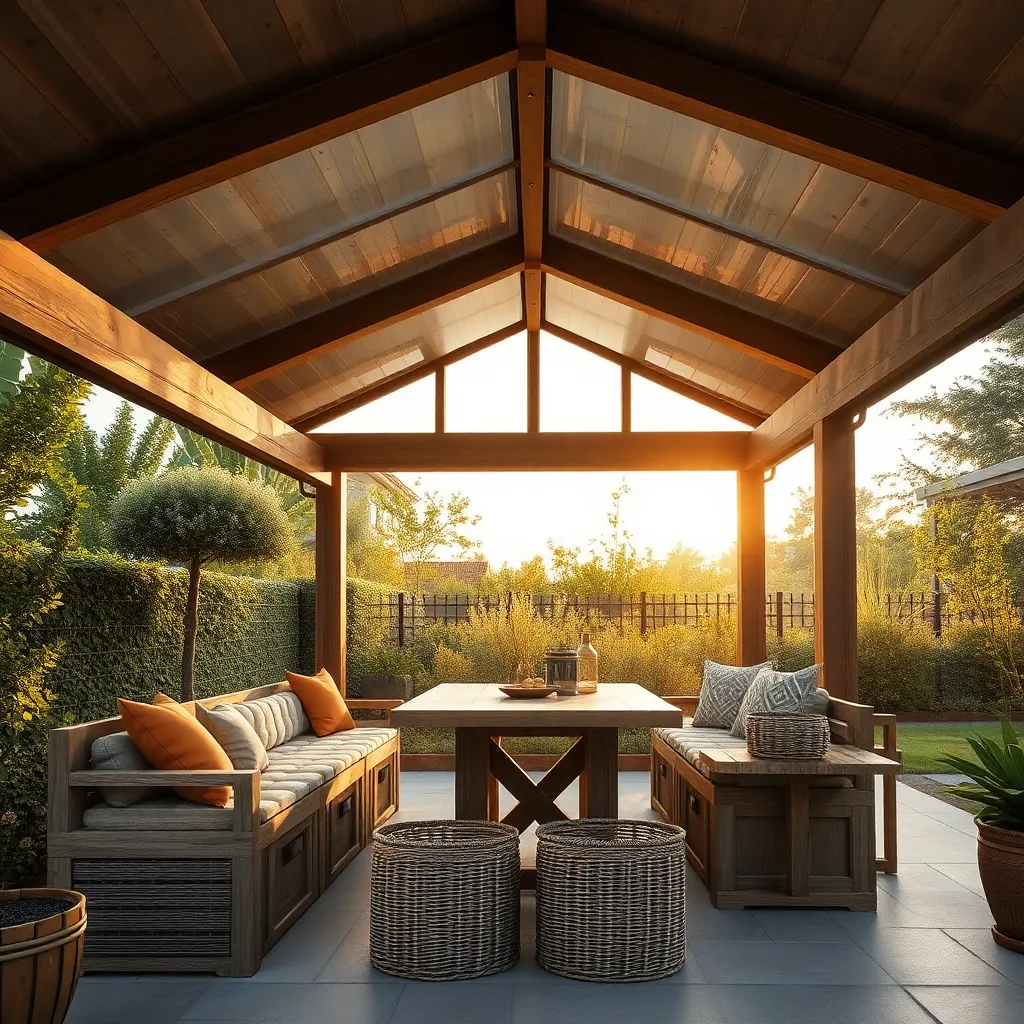
Consider integrating functional outdoor storage to keep your space organized and clutter-free. Opt for multi-purpose furniture, like benches with built-in storage, to maximize utility without sacrificing style. These pieces not only provide seating but also offer a discreet place to store cushions, gardening tools, or outdoor toys. For a DIY approach, you can construct a simple storage bench using weather-resistant woods like cedar or teak, which are both durable and aesthetically pleasing.
For those seeking advanced options, incorporate vertical storage solutions with wall-mounted shelves or cabinets. These can be made from treated wood or metal to withstand the elements. Consider adding hooks or pegboards within these units to hang small tools or accessories, keeping them easily accessible. When planning your outdoor storage, aim for a balance between functionality and design, ensuring your space remains both practical and inviting.
Select Durable Outdoor Flooring
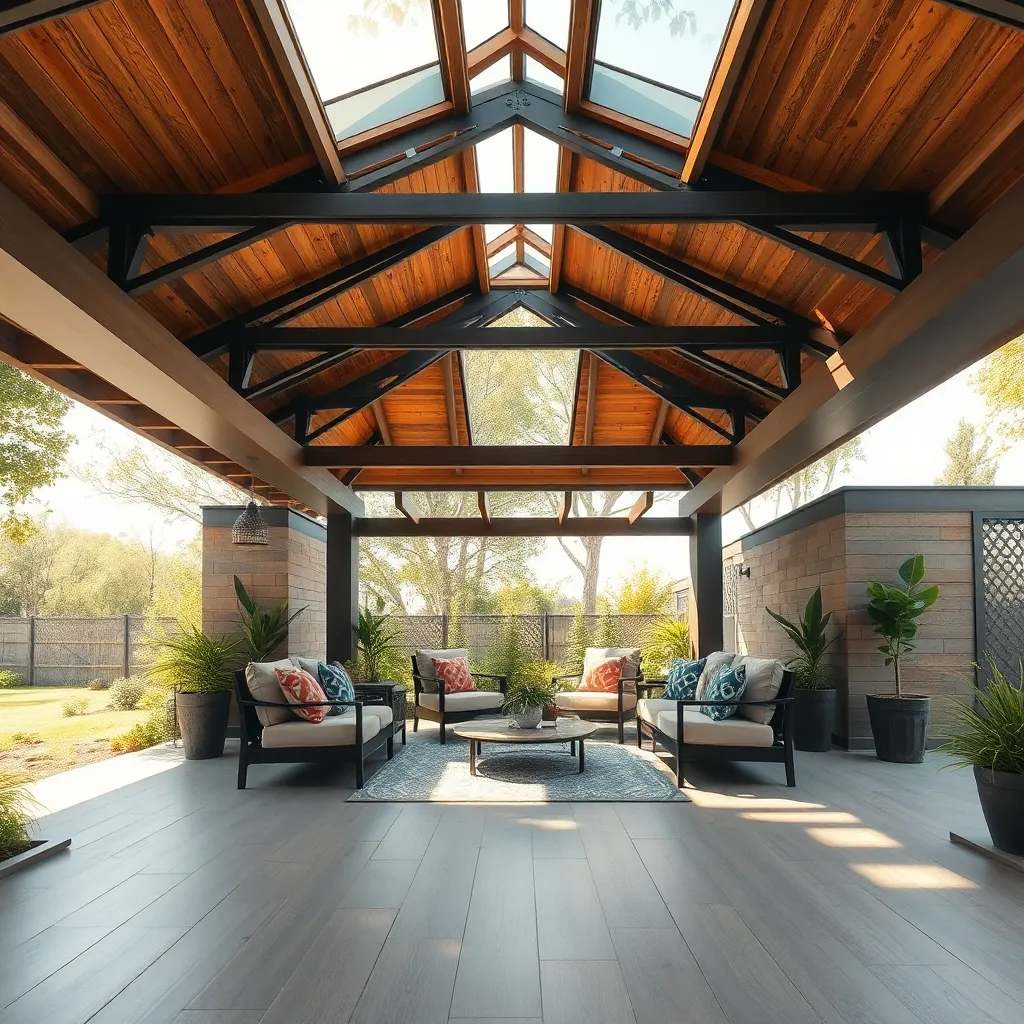
When selecting durable outdoor flooring, consider materials that can withstand various weather conditions and provide a long-lasting foundation for your outdoor space. Concrete, natural stone, and composite decking are excellent choices for their durability and low maintenance. For beginners, starting with concrete is a straightforward option as it offers a clean, modern look and can be easily customized with stains or textures. For those wanting a more advanced project, natural stone like slate or travertine provides a timeless elegance but requires precise installation to ensure stability and longevity.
Choosing the right flooring not only enhances the aesthetic appeal but also ensures safety and comfort. Ensure that the flooring material is slip-resistant, especially in areas prone to moisture. Opt for larger tiles or pavers to create a seamless look and reduce the number of grout lines, which can become dirty over time. For a cozy touch, consider adding outdoor rugs made from weather-resistant materials to define different zones within your outdoor shelter. These practical steps will create a welcoming and resilient surface that complements your outdoor comfort project perfectly.
Conclusion: Creating Beautiful Outdoor Spaces
As you step into the world of outdoor comfort for your next project, remember the seven key concepts that can significantly enhance your relationships: embracing shared spaces to foster connection, incorporating nature to nurture tranquility, creating cozy seating for intimate conversations, using lighting to set the mood, adding personal touches that reflect mutual interests, ensuring accessibility for inclusivity, and integrating multi-functional elements to encourage diverse interactions. Each of these ideas is a stepping stone towards building stronger, more meaningful connections with your loved ones.
To bring these concepts to life, why not start by choosing one idea that resonates with you and implement it in your outdoor space this weekend? Perhaps rearrange your patio to create a more inviting atmosphere or add a new element that sparks joy for both you and your partner.
Make sure to save this article as a handy reference guide for future projects, ensuring your relationship-building journey is always within reach. As you embark on this path, know that every thoughtful choice you make today lays the groundwork for a successful, harmonious relationship tomorrow. Your outdoor space is more than just a project—it’s a canvas for love and connection.
